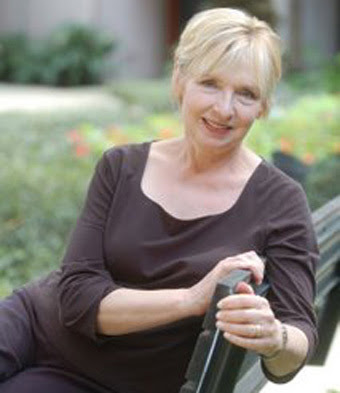1. Even in this computer savvy world many experts prefer to sketch first and then turn to computer with the theory that from brain to hand evokes more visual creativity than the brain to computer? What is your thought on this? Is it scientifically proven?
I think that hand sketching is ideal. That’s because for me, the computer gets in between the process of transferring energy from brain to hand. But maybe I’m old-fashioned.
2. What are basic steps to be innovative in design?
That’s a hard question to answer because it changes day to day. For me, being innovative comes directly from the content. If I have a great story to design or a great headline and image to play off of, I’m inspired! If the story is dull or the headline uninteresting or the photo or image not appropriate for the content, I am not inspired.
3. Can a designer experiment on a daily basis? Will it disturb the newspaper’s design pattern?
I believe in the following style but I believe you can be creative within guidelines. And I love what Picasso said – something to the effect that we are the most creative when we have the most challenges. I love working within ONE type family using all of the styles instead of adding ten more typefaces to the design or using every color in my crayon box. So yes, you can be experimental on a daily basis. But staying within the style sheets creates the most interesting challenges.
4.What is the basic structure of a design team in a newspaper?
A leader, visual director or editor I would call them. That person oversees the spirit and look of everything to make sure things are coordinated and working in harmony. That person is also a teacher, in a Zen like way. They guide, they gently direct, they keep things on track while encouraging creativity.
Then the team of designers and other visual people can be a small pool of three or four or a large team of 15. That visual director is key to making things all come together.
5. What is the role of alternative storytelling these days?
Absolutely essential! Content drives all design decisions. If the publication provides terrific story telling, then the design can help tell that story – through appropriate typographic voice and style, to the pacing and flow in the grid system to the subtle meaning, depth and dimension with color.
6. These days lot of newspapers shifting from Broadsheet to Berliner size or tab. From the designers point of view which is more challenging and visually creative?
I don’t think the size or shape has anything to do with it. Designers can work with any shape or size. As long as you have good content, anything can work.
7. Coming to the redesign, there is thought that the design consultant must be one who knows the culture of the country or state. For example, hiring an Indian consultant for redesigning an Indian newspaper and so on. What is your thought on that?
It all depends on the designer. I think it is important for the consultant to talk with the people in the paper and in the city. They need to get a good sense of the atmosphere, culture, politics, and environment in which the publication exists. That can be done if the consultant is willing to do this work. It’s all part of a redesign. You must be willing to jump in and experience.
8. What is the future of illustrating the news from the field?
That is already being done through photography, video, interactivity, interviews, audio, etc.
9. To become one of the internationally best-designed newspaper what a design team has to do? What are the basic things and what one has to improvise?
– Make sure the design reflects the philosophy of the paper and the content within the paper.
– Make sure that the design decisions are not arbitrary but are based on design principles and theories to back up every decision.
– Remember that good design is not decorating, but information.
10. Finally how a designer can reinvent himself or herself?
We do that on a daily basis – looking at everything from newspapers to magazines to iPad publications to books, CD covers, posters, billboards, movies, websites. It’s all out there, we just need to keep our eyes and hearts open.
![]()




